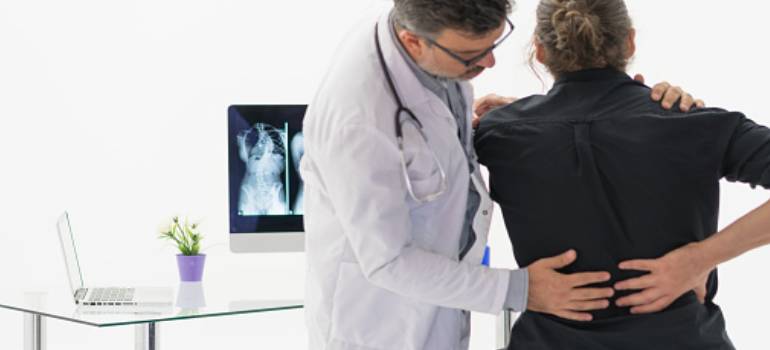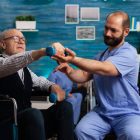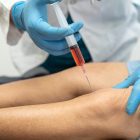Scoliosis and adult spinal deformity are two of the most prevalent spinal problems addressed by spine experts. The true extent of the problem in society is unknown. In the general population, however, it is estimated to reach as high as 25%. Scoliosis is a kind of condition in which the spine curves weirdly from side to side. The curve is usually 10 degrees or more. The abnormal curvature occurs in adults due to the advancement of teenage scoliosis or degenerative alterations in the spinal column. Some of the best orthopaedic clinics in Gurgaon specialise in treating this problem and provide all of the necessary amenities.
What is the cause of Scoliosis in Adults?
Adult scoliosis has a variety of causes, depending on the type of scoliosis. Degenerative scoliosis is the most prevalent type of adult scoliosis (spine curves as you age). Adult scoliosis could be a case of undiagnosed childhood scoliosis that was detected later in life. Adolescent scoliosis may develop symptoms with age and necessitate therapy in some circumstances.
Scoliosis idiopathic (meaning it has no known cause) is commonly detected in childhood or adolescence. Because the curve is identified after complete skeletal growth, it is called adult idiopathic scoliosis when it originates or is discovered after puberty.
Symptoms
The severity of aberrant curvature varies from modest to severe. Adult scoliosis often has no symptoms, and people go about their lives without any complications. A variety of signs and symptoms may appear as the degree of aberrant curvature grows. Changes in posture and body symmetry are usually indicators that scoliosis is developing. If you come across any of the below-mentioned symptoms, do visit an orthopaedic doctor near me.
- It is possible to get pain as a result of degenerative changes and muscular imbalance. Neurologic symptoms such as radiating pain and numbness in the extremities may develop over time. Nerve compression can also cause muscle weakness.
- In more serious cases, spinal cord compression can result in an inability to walk. Internal organs, particularly the lungs, might get compressed, making breathing difficult.
Diagnosis
- Imaging, which includes a combination of special X-rays, CT scans, and MRIs, is used to make a definitive diagnosis. Treatment is determined by the severity of aberrant curvature as well as the patient’s presenting symptoms. The initial line of defence is usually anti-inflammatory medicine along with physical therapy.
- Injection therapy can also be utilised to alleviate some symptoms. Bracing is frequently used in adolescent scoliosis, although it is rarely utilised in adults.
- Corrective surgery becomes an option as the aberrant curvature worsens and the symptoms become more severe. Any scoliosis surgery aims to restore proper spinal column balance concerning the patient’s centre of gravity.
Treatment for Scoliosis
Conservative treatment: Scoliosis treatment may usually be managed without surgery; all that is required is a doctor’s supervision, core-strengthening exercises to strengthen your back and abdomen, and over-the-counter medicine. However, if you are a frequent smoker, you must quit immediately because smoking has been shown to hasten the degenerative process.
In general, orthopaedic doctor near me will advise physical therapy, which may include:
- Trying to better my posture
- Swimming and other low-impact workouts
- Stretching daily
- Maintaining a healthy lifestyle
Surgical intervention
In some cases of adult scoliosis, surgery is required. Because of the dangers of complications from spinal surgery, this is the last resort. The following are some of the points why surgery may be recommended for scoliosis treatment:
Pain: If scoliosis causes severe and persistent back and leg discomfort that does not respond to conservative treatment, surgery may be required.
Imbalance in the spine. The balance of the spine is crucial in determining the course of scoliosis and the necessity for surgery. When standing, the head should be balanced over the centre of the pelvis when facing forward and over the hip joints when facing sideways.
Outlook of scoliosis in adults
Adult scoliosis has various outcomes based on the cause (idiopathic or degenerative) and severity of symptoms. The initial line of treatment is always non-operative treatment, such as physical therapy, a regular exercise routine, and over-the-counter anti-inflammatory drugs. Adult scoliosis symptoms can be reduced by keeping a healthy body weight and participating in a normal exercise routine.





